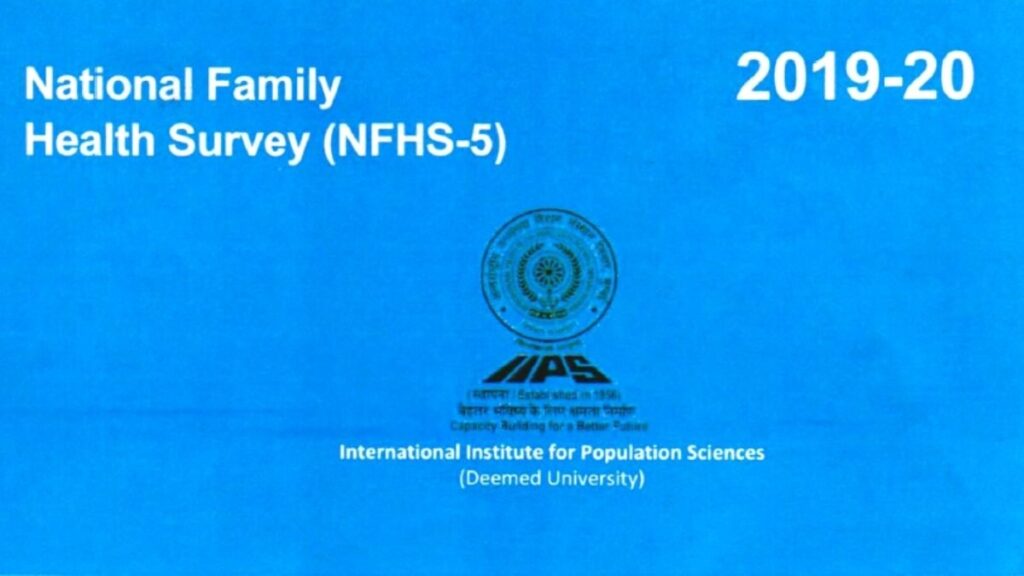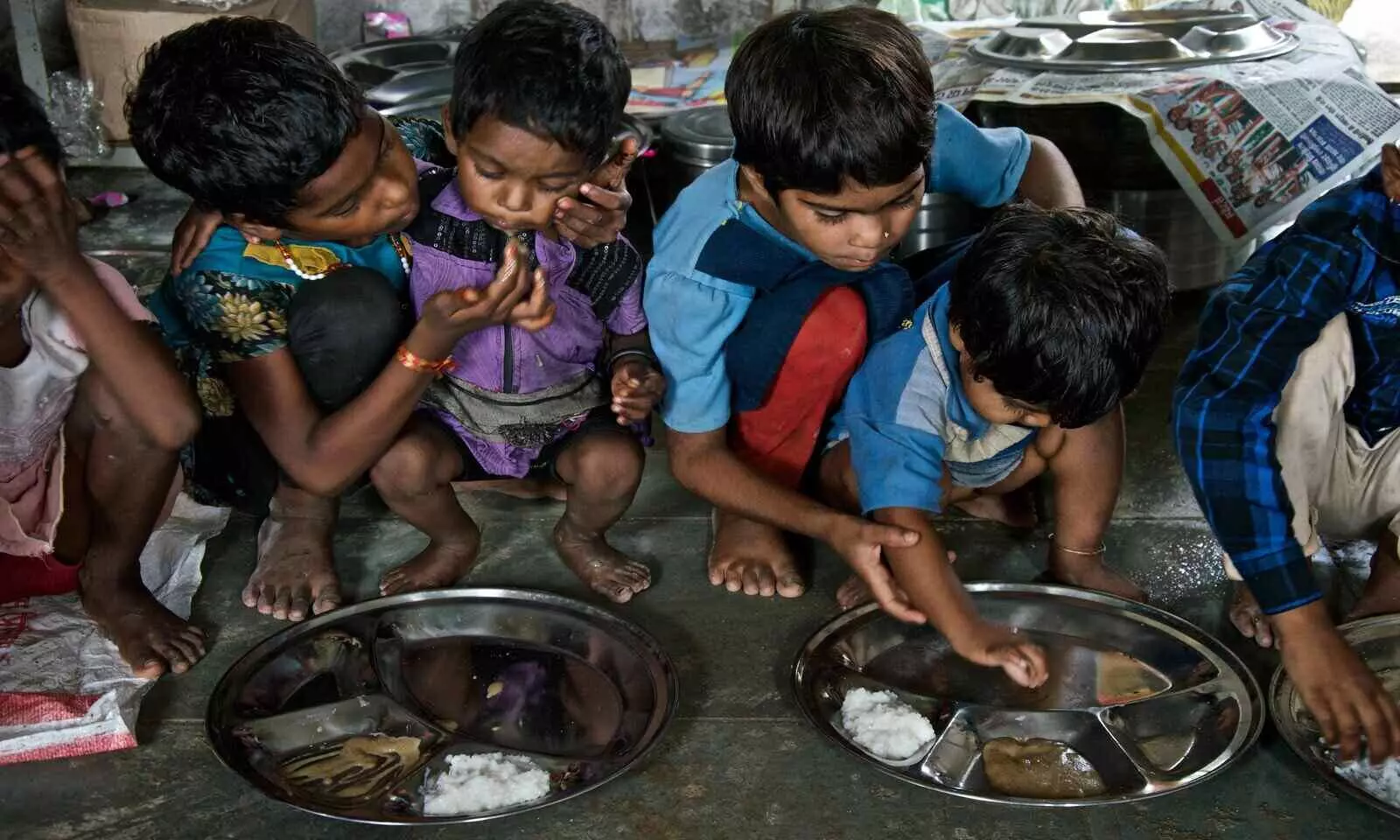The National Family Health Survey (NFHS) is a multi-round, large-scale survey that is undertaken in a representative sample of Indian homes.
The important findings from the second part of the most recent NFHS (NFHS-5, 2019-21) have been announced, and the conclusion is mixed, with plenty of good news and plenty of bad news.
These findings are particularly important and should be given due consideration, as they are not a hurriedly compiled state-of-health index, but rather a complete, comprehensive, multi-dimensional report card on India’s demographic and health trajectory.
Key Findings of the Survey :-

- A comparison of NFHS 4 and 5 report cards: The NFHS-5 report card has various advantages.
- There have been improvements in a variety of areas, including educational attainment, institutional deliveries, immunizations, infant mortality, and so on.
- Progress, regardless of speed, should be celebrated, especially considering the deplorable state of India’s health system, which has become painfully obvious since the COVID-19 outbreak.
- A Major Positive: The Total Fertility Rate (TFR) has been steadily decreasing over time, and it is presently slightly below the replacement rate of 2.1 (at 2.0).
- This is true in all Indian states, indicating that the overall population has stabilised.
- Difference in Sex Ratio at Birth and Adulthood: For the first time in India, there were 1,020 adult women for 1,000 males between 2019 and 21.
- However, the findings should not be used to dismiss the fact that India’s sex ratio at birth (SRB) is still more biassed towards males than the natural sex ratio (which is 952 girls per 1000 boys).
- The states with the lowest SRB are Uttar Pradesh, Haryana, Punjab, Rajasthan, Bihar, Delhi, Jharkhand, Andhra Pradesh, Tamil Nadu, Odisha, and Maharashtra.
- Poor Performance in Dealing with Anaemia: Anaemia has become more common in children under the age of five (from 58.6 to 67 percent), women (53.1 to 57 percent), and males (22.7 to 25 percent) in all Indian states (20 percent -40 percent incidence is considered moderate).
- With the exception of Kerala (which has a 39.4 percent rate), all states have a rate of 39.4 percent.
- Malnutrition Indicators’ Performance: All three malnutrition indicators, stunting (low height-for-age), wasting (low weight-for-height), and underweight (low weight-for-age), have improved.
- However, this overall improvement presents an anomaly because numerous States in Phase 1 of the NFHS-5 indicated a worsening in one or more of these indicators, but none of the States showed a worsening in Phase 2.
- It’s probable that the covid-19 influenced the Phase 2 survey, resulting in undercounting of instances.
- In addition, the number of overweight children, women, and men is rising, indicating malnutrition, which has major health effects in the form of noncommunicable illnesses (NCDs).
Issues Associated :-

- Micronutrient Deficiencies: In addition to anthropometric measurements, micronutrient deficiencies, or a lack of vitamins and minerals important for bodily processes such as generating enzymes, hormones, and other substances needed for growth and development, are also assessed.
- Micronutrient data is not available from the NFHS.
- A ‘One-Size-Fits-All’ Approach to Dietary Intake Monitoring: Diets in India are quite diverse. Many traditional diets reflect both local climate circumstances and a diverse range of vital nutritional sources, such as proteins, lipids, and carbohydrates.
- Dietary policing, which imposes an unnatural uniformity and prevents huge parts of Indians who are not historically vegetarian from eating animal protein, is likely to limit micronutrient diversity.
- Covid-19 Blame Game: Because the data for the Phase-2 of NFHS-5 was obtained in significant part under the exceedingly unusual conditions of the COVID-19 pandemic, it has been suggested that the poor health outcomes are due to Covid-19.
- However, the pandemic cannot be blamed fully for the decline in public health indices.
- While the Pandemic may have fueled the fire of poor public health, it did not start it.
- Unethical Delivery Practices Affecting Women’s Health: The poll focuses on markers of women’s empowerment, autonomy, and mobility, as well as reproductive health.
- However, according to data, caesarean deliveries have grown considerably; 47.5 percent of births in private health institutions are via C-section (14.3 percent in public health facilities).
- Limited Male Engagement in Family Planning: In states such as Andhra Pradesh (98 percent), Telangana (93 percent), Kerala (88 percent), Karnataka (84 percent), Bihar (78 percent), and Maharashtra, female sterilisation continues to dominate as the contemporary technique of contraception (77 percent ).
- Male participation in family planning is restricted, as seen by the poor adoption of condoms and male sterilisation in many states.
Way Forward :-

- Policy Interventions to Address Health Concerns: The survey reveals significant health disparities. The research suggests that governments at both the national and state levels should be concerned about health.
- An action plan to address India’s health requirements is needed, and it must be inclusive, robust in its commitment, and backed up by enough resources.
- Lessons to be Learned from the NFHS: The findings of the NFHS serve as a stark reminder of the urgent need to bridge gaps in girls’ education and address women’s and children’s malnutrition.
- The pandemic’s impact should be mentioned, as well as the disruption it brought to services such as balanced nourishment for children.
- Such events highlight the importance of constructing resilient and fortified systems capable of delivering even under the most adverse conditions.
- Collaboration in the Health Sector: To make basic and advanced health services accessible, affordable, and acceptable to all, current times require integrated and coordinated efforts from all health institutions, academia, and other partners directly or indirectly associated with health care services.
- Behaviour-Change Communication Strategy: To guarantee that males also take responsibility for family planning, the government must implement a focused social and behavior-change communication strategy.
Conclusion :-
- Only the decennial population census gives more comprehensive data than the NFHS. It should be seen as a critical turning point in India’s policymaking. The bigger picture for states and the centre is to see it as a matrix to work with in order to enhance development metrics.

